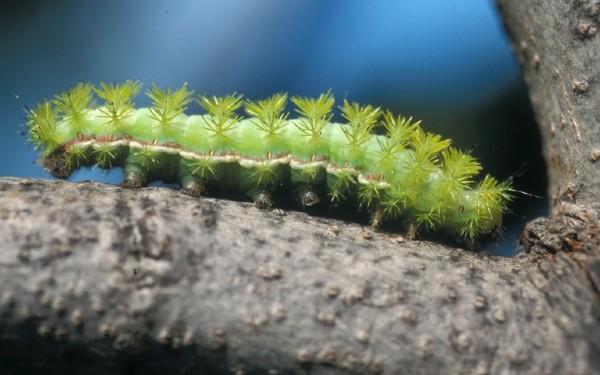Key Points
- Most of the caterpillars that are called stinging caterpillars don't sting like wasps or hornets do. They have hairs or spines that sometimes have a poison gland at the base.
- When touched, the hairs break off and the poison is injected, causing an inflammation of the skin and a burning sensation that may feel like a bee sting.
- The reaction can be more severe if the eyes, nose or mouth are affected.
- Stinging caterpillars are not that commonly found around home and yards. Most feed on native trees and shrubs in wooded areas.
The saddleback caterpillar is not fuzzy, but has a striking green saddlecloth on its back with a purplish brown saddle in the middle. It also has irritating spines.
The puss caterpillar (below) is about 1 inch long, when fully grown, furry, and gray to reddish brown in color.

The Io moth caterpillar is about 2 1/2 inches long when fully grown. It is bright green with red and white stripes and four rows of short, stinging spines.

It is not necessary to control any of these caterpillars. They cause minimal damage to trees and shrubs.
Rev. 2020
